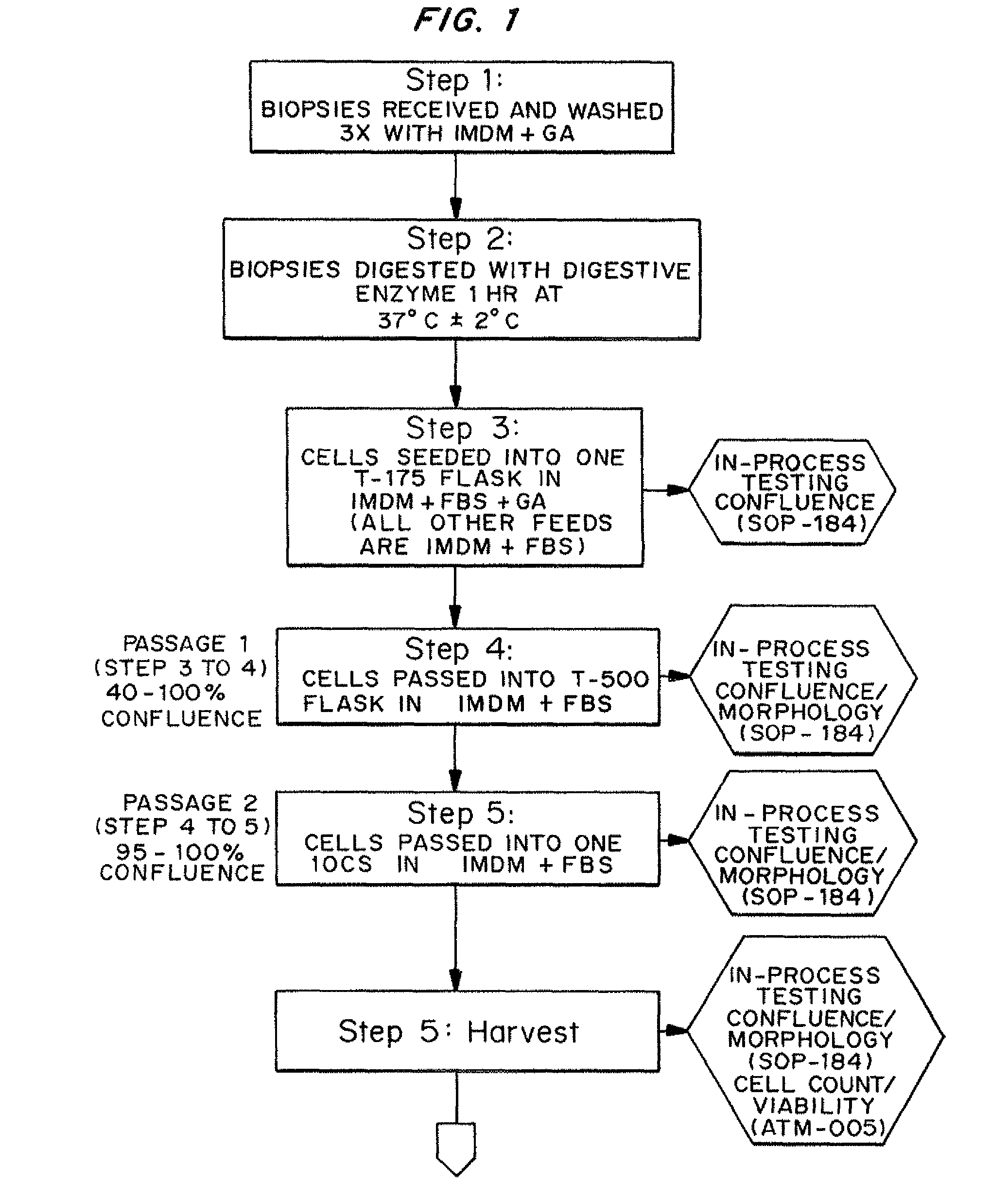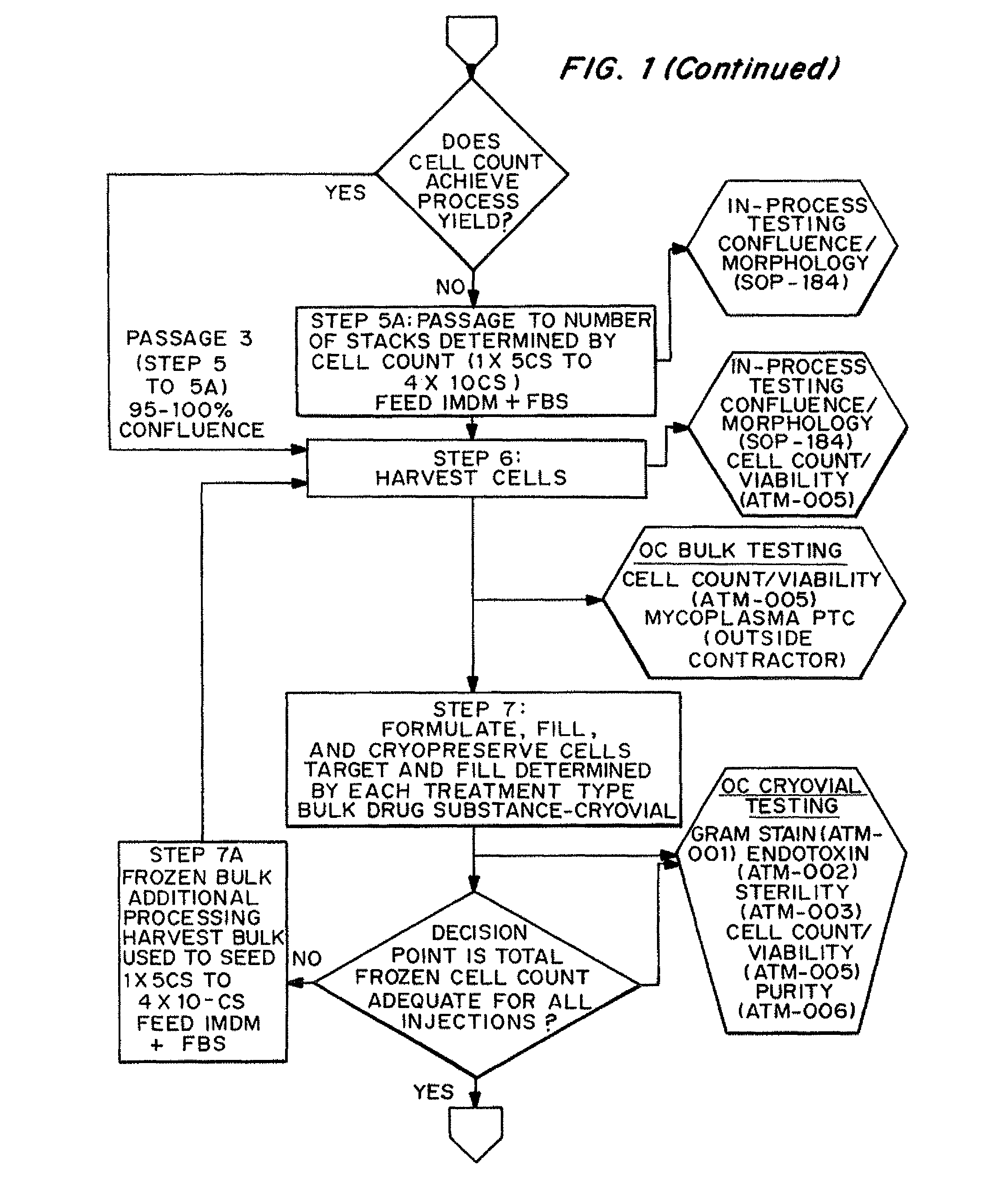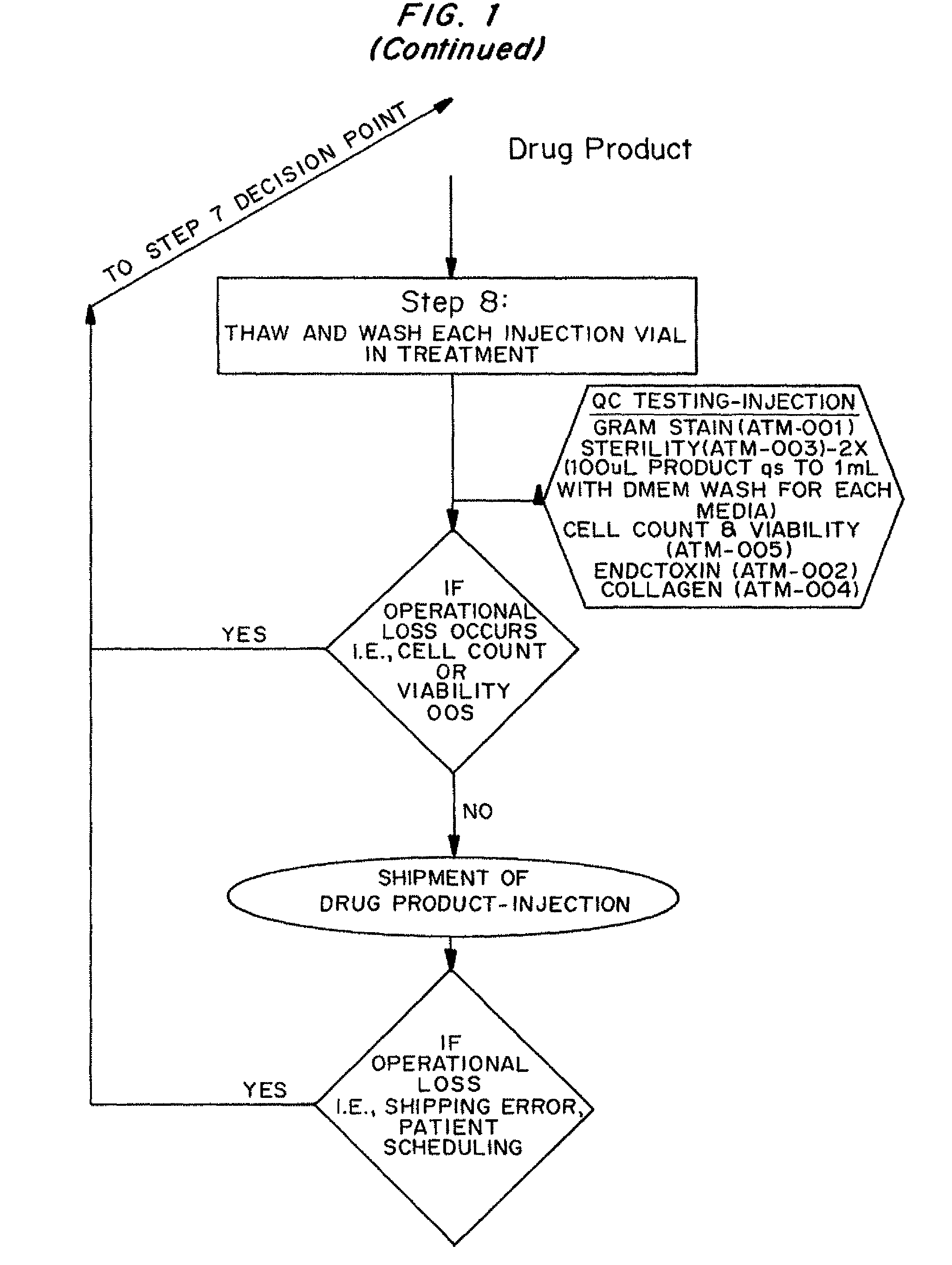Dosage unit formulations of autologous dermal fibroblasts
a technology of dermal fibroblasts and injection units, which is applied in the direction of drug compositions, biocides, skeletal/connective tissue cells, etc., can solve the problems of limited silicone injections, poor results obtained by non-biological injections, and the practice of abandoning, so as to reduce the severity of these wrinkles and increase the synthesis of extracellular matrix components
- Summary
- Abstract
- Description
- Claims
- Application Information
AI Technical Summary
Benefits of technology
Problems solved by technology
Method used
Image
Examples
example
[0050]If the cell solution added is 7 μL, then subtract 7 μL from 1 mL, or 1000 μL. 1000 μL-7 μL=993 μL FACS buffer added.
[0051]Mix the testing vial by vortexing continuously on vortex setting 8 for 3 seconds.
[0052]Add the appropriate amount of cell solution to the FACS buffer. Mix by vortexing continuously on vortex setting 8 for 3 seconds.
[0053]Pellet the cells in each sample tube by centrifugation at 3,000 rpm for 3 minutes. If difficulty in pellet formation arises, then centrifuge tubes again at 3,000 rpm for 3 minutes. If pellet formation is adequate after the second centrifugation proceed with aspirating the supernatant. With the aid of a pipette, aspirate the supernatant into a waste container containing 20% bleach in DI water. Leave approximately 50 μL of supernatant in each tube to minimize inadvertently aspirating cells.
[0054]Add 200 μL of 1% HuS in PBS. Mix by vortexing continuously on vortex setting 8 for 3 seconds.
[0055]Incubate tubes for 25 minutes±5 minutes at 2-8° C....
PUM
 Login to View More
Login to View More Abstract
Description
Claims
Application Information
 Login to View More
Login to View More - R&D
- Intellectual Property
- Life Sciences
- Materials
- Tech Scout
- Unparalleled Data Quality
- Higher Quality Content
- 60% Fewer Hallucinations
Browse by: Latest US Patents, China's latest patents, Technical Efficacy Thesaurus, Application Domain, Technology Topic, Popular Technical Reports.
© 2025 PatSnap. All rights reserved.Legal|Privacy policy|Modern Slavery Act Transparency Statement|Sitemap|About US| Contact US: help@patsnap.com



